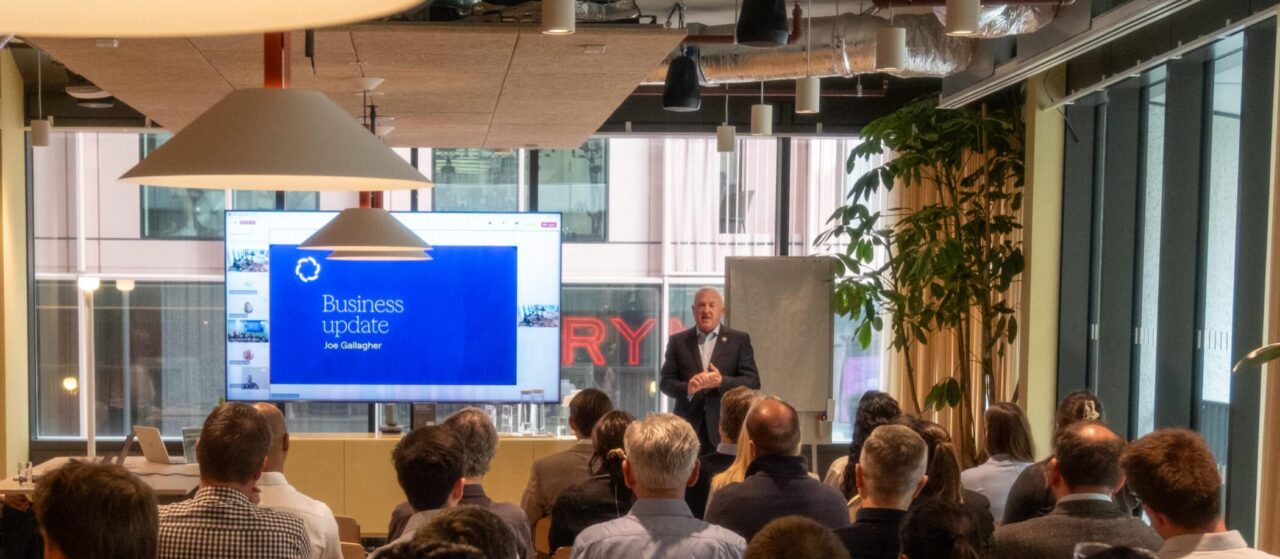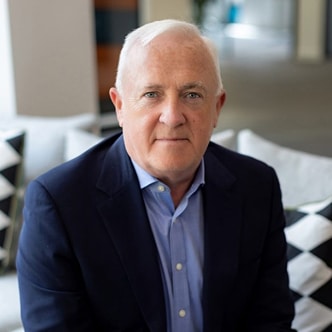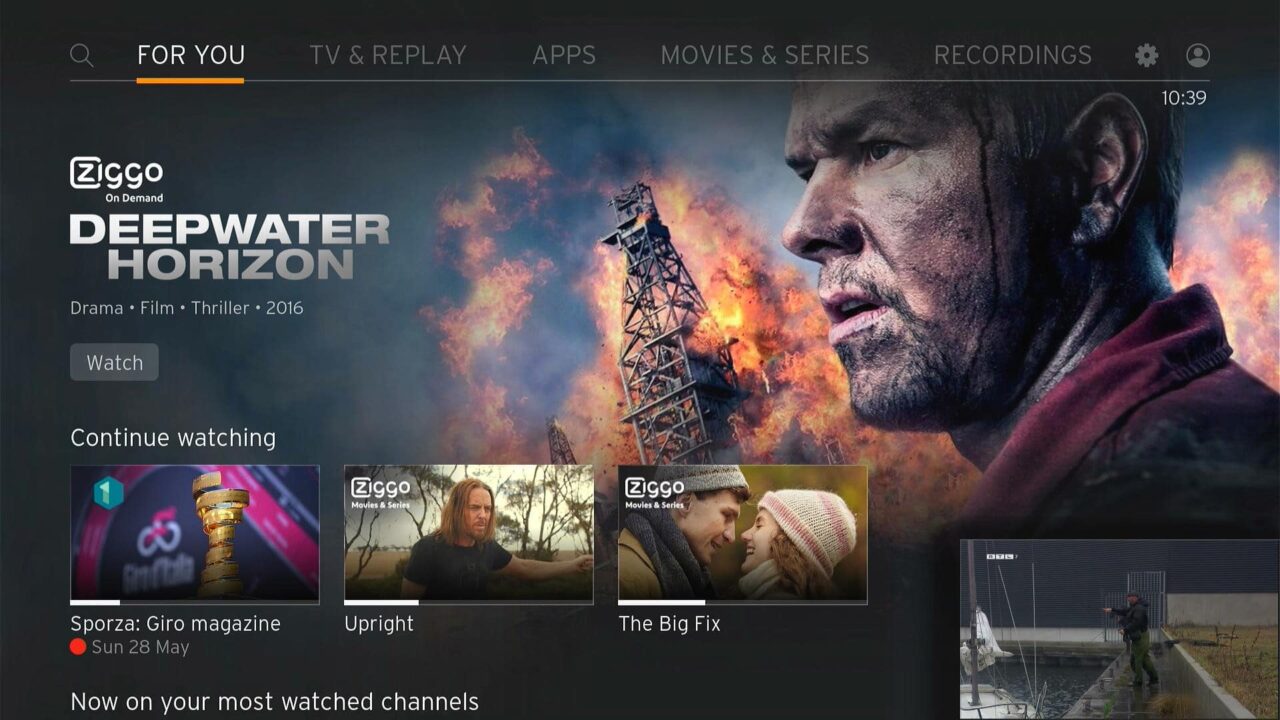From cloud computing and Network-as-a-Service to the smart home and home security, telcos are broadening their horizons beyond their traditional fixed and mobile offerings. Whether providing connectivity to consumers or B2B, they’re becoming a one-stop shop, building on their seamless connectivity and extensive infrastructure with the latest technology.
In a panel discussion at the SCTE’s 2024 Tech Expo in Atlanta, GA, Liberty Global Chief Strategy Officer Jim Ryan discussed how fixed mobile convergence (FMC) is evolving, and how the TMT industry is expanding its traditional business and adapting to the world’s growing tech demands.
*This interview has been edited and condensed. Moderated by Ron Reuss, CableLabs SVP and Chief Strategy Officer, Jim was joined by Damian Poltz, SVP, Wireline Networks at Rogers Communications in Canada, and Ray Collins, SVP of Infrastructure and Corporate Strategy at Liberty Latin America.
Watch the full conversation here.
CableLabs: When you think about growth for Liberty Global and the emerging demands in your markets, what are you focused on?
Jim Ryan: Our business is in Europe, and we’re seeing quite a lot of evolution at the moment. We’ve hit a level of maturity in the FMC market and the convergence of wireline and wireless. And now I’d say there are half a dozen-odd opportunities for growth that reside there for us.
There’s activity around the whole buy and wholesale markets, which are likely more advanced than over here in North America. And while Europe has always focused on the connectivity piece for B2B, there is opportunity ahead of us in the ICT space. Then there are the adjacencies – across our markets, we’re looking at how we can put more services into the homes, whether through smart homes or health and a number of these areas. And lastly, in Europe, we’re beginning to focus more on segmentation within the markets, whether through looking at multi-brand strategies or value-brand strategies.
Historically, cable has been this sort of monolithic single brand, this single product. Because of mergers that have happened between mobile and fixed across Europe, it now comes with a lot of other brands and offerings. And so there’s more segmentation – along with the space growing more rapidly.
CableLabs: Where do you think FMC [fixed-mobile convergence] will go? Is it just the bundle, or is there more to do beyond that that can bring value to customers?
JR: The fundamental truth still pertains that consumers are looking for a one-stop shop for their connectivity. FMC is the glue, the baseline – the fixed line is a relationship into the home and the mobile line is a relationship with the person. And we’re layering on that. We think more and more about personalization and recommendations through the phone, not just through the set-top box. A lot of our app and entertainment strategies sit on the box, but increasingly also on the phone.
Other opportunities are emerging due to the capabilities of our connectivity: the ability to give WiFi guarantees off the back of the performance of 5G, the ability to offer mobile connectivity or nomadic connectivity through fixed wireless access, to creating subscriptions for holiday homes. And then, although still nascent, the development of the Network-as-a-Service capabilities that allow us to provide network functionality that we weren’t able to provide prior to the 5G Standalone.
So whilst, in our case, we’re hitting up to 50 percent FMC ratios, 50 percent of our broadband customers will be having one or more of our mobile SIMs. We have much lower churn with customers that take a combined service from us. And there is still more runway ahead of us as we lay FMC on top of the hybrid fixed strategies.
Customer segmentation has been closely associated with value brands. We’ve seen it for a long time – all of our markets have two or three what we call flanker brands, alongside the main brand. And so these brands target customer segments that have historically been either right outside of the sphere of the higher price, higher speed customer base that cable has traditionally attracted, or they’re offering alternatives to existing customers, who now can see opportunities to take a different combination of price and product. So in Europe, that end of the market is growing very rapidly. We’re beginning to have to be more adept and more agile with multi-brand portfolio management.
CableLabs: You mentioned that having that flexibility and reliable connectivity has created customized offerings. And you mentioned NaaS [network-as-a-service] being part of this as well. What do you think the opportunities are in this space?
JR: I would say two overarching comments. No. 1 is – I think the success of NaaS is going to be a function not just of the technology, but of the ecosystem that develops around it.
How is the product going to come to market? How is it going to be sold? How is it going to be adopted by developers? What is the marketplace for it? We’re still early days – I know we’re beginning to see some great examples in Canada, where you’ve got a great venture that brings the industry together. It’s one of those where the industry has to collaborate – obviously within the bounds of regulatory rules – but collaborate to provide homogeneity around network capabilities.
And then the second thing – a lot of it at the moment is in the mobile space: fraud prevention, location identification, quality on demand, speed boosts, those kinds of things. But there’s also an opportunity in cable apps and how we can bring NaaS into fixed as well so that we have these network capabilities matching across both. We’ve got some trials going on with security management and drones, and with Explorer WiFi where, in the home you can remotely manage quality on demand for the broadband side.
Intuitively, if we get it right, it means that instead of services riding over the top of the network, they can be embedded in the network. That’s obviously the theory, but it’s early days, and the GSMA work is helping enormously.
CableLabs: Let’s shift gears a little bit and talk about business services. You mentioned it as part of your opening – it would be great to hear more about how you’re focusing on particular areas where you see the biggest potential.
JR: The legacy of where the cable industry has come from in Europe is, of course, again, the supremacy of connectivity. It means that B2B products have primarily been focused around connectivity.
We have, by and large, a wide rolodex of customers, but we’ll have, effectively, the connectivity piece of their wallet. And, increasingly, connectivity is also intertwined with data, data management, cloud management, security. And whilst the high end of the market is well-served with system integrators and big bespoke data management projects and hybrid cloud strategies, the mid-market is still underserved. The smaller businesses haven’t really figured out cloud and on-prem and off-prem and hybrid. There’s a major opportunity to help them build on top of the connectivity relationships to provide them with that advice. The hyperscalers haven’t addressed that market either.
Cable comes from a sort of, I would say, closed environment, where it was its own network, its own product, its own services. And the concept of partnerships beyond content was a little bit alien. But that world is shifting and the cable industry is inserting itself in the middle of a big ecosystem, which by definition requires partnerships. The opportunity in the cloud, in AI, secure ICT, broadly speaking, connectivity in that mid-market is ripe for partnerships and to help these businesses manage transitions.
We can be present across every segment in these underpenetrated markets with the core ingredients of connectivity, cloud and data, and security.










